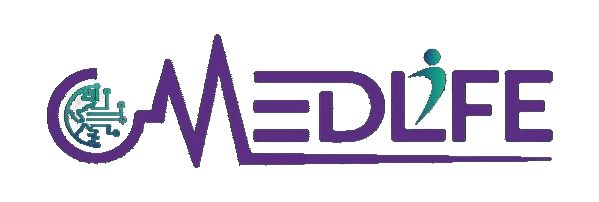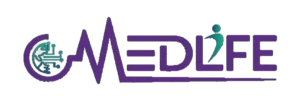In the ever-evolving world of healthcare, managing your accounts receivable (A/R) is one of the most crucial components for maintaining a healthy revenue cycle. Delays in billing, inaccurate claim submissions, and inefficient follow-ups can result in lost revenue, increased administrative workload, and a hit to your financial stability. With the rising complexities in medical billing, it is more important than ever to adopt effective strategies to streamline your A/R processes and ensure your practice remains financially sustainable.
To help you navigate this challenge, we’ve compiled 7 proven tactics to optimize accounts receivable in medical billing. Whether you’re handling billing in-house or considering outsourcing, these strategies will significantly improve your collection rates, reduce claim rejections, and enhance cash flow management.
1. Precision Claim Submission: The Foundation of Efficient A/R
Accuracy is the key to reducing claim rejections and ensuring that your practice receives timely reimbursements. The first step in improving A/R is submitting accurate claims right from the start. Incorrect coding, missing patient information, or faulty insurance details are all common reasons claims get denied or delayed.
Action Steps:
- Implement streamlined workflows that allow your billing team to double-check each claim before submission.
- Invest in integrated billing software that minimizes human errors and speeds up the claim submission process.
- Train staff on the latest coding regulations to ensure compliance and correct coding practices.
By taking a proactive approach to claim submission, you’ll significantly reduce the back-and-forth communication with insurance companies, which ultimately accelerates your revenue cycle.
2. Insurance Eligibility Verification: Don’t Leave Money on the Table
One of the most common causes for delayed payments is not verifying insurance eligibility upfront. Ensuring that your patient’s insurance is active and that the plan covers the necessary services before providing treatment is crucial for reducing the number of rejected claims.
Action Steps:
- Verify insurance details before the patient’s appointment. This includes confirming coverage, understanding co-pays, and determining any potential out-of-pocket costs.
- Create a system for real-time eligibility checks by integrating with the payer’s databases or using advanced billing software.
- Communicate financial responsibility with patients prior to their visit to prevent any surprises down the road.
Effective eligibility verification not only prevents claim denials but also builds trust with patients by ensuring transparency around their financial responsibilities.
3. Clear and Transparent Billing Policies: Building Trust and Reducing Delays
Establishing clear billing policies and communicating them upfront is essential for a smooth A/R process. When patients understand what they owe and when payments are due, they are more likely to make timely payments, reducing the chances of delayed accounts.
Action Steps:
- Provide a written payment policy to all new patients, outlining co-pays, deductibles, and payment terms.
- Set expectations early by reviewing these policies during the first appointment and making sure the patient understands their financial obligations.
- Offer multiple payment methods such as credit card payments, online portals, and installment options, making it easier for patients to pay.
By fostering a transparent payment process, you’ll not only improve patient satisfaction but also reduce the occurrence of unpaid bills and collection issues.
4. Strategic Follow-Ups: Persistence Pays Dividends
Even with the best preparation, overdue accounts are inevitable. The key to improving A/R is setting up a systematic follow-up process. Timely reminders for overdue accounts can drastically improve collection rates, especially when they are sent out at the right intervals.
Action Steps:
- Create a follow-up schedule that begins as soon as a claim is overdue and continues until the payment is collected.
- Automate follow-ups using billing software, which can send automated reminders to patients and insurance companies about pending payments.
- Monitor aging reports regularly to identify accounts that need immediate attention.
Persistent follow-ups are essential for maintaining a healthy cash flow, ensuring you don’t miss any opportunity to recover funds from unpaid claims.
5. Harnessing Technology to Boost A/R Performance
Technology is your best friend when it comes to managing A/R efficiently. Leveraging modern billing software and electronic health records (EHR) systems will not only streamline your processes but also provide valuable insights into your A/R performance.
Action Steps:
- Invest in automated billing software that tracks and updates your claims in real time, reducing manual data entry errors.
- Use analytics tools to identify trends, monitor your A/R aging, and generate actionable reports for improvement.
- Ensure integration with EHR so that patient information and billing codes are transferred seamlessly, further reducing errors and delays.
Technology can help you save time, reduce administrative costs, and make smarter decisions based on real-time data, ultimately improving your overall A/R management.
6. Empower Your Staff: The Backbone of Efficient A/R Management
A well-trained billing team is the cornerstone of an efficient A/R process. Ensuring that your staff understands medical billing regulations, coding standards, and the latest industry practices is essential for keeping your accounts receivable in check.
Action Steps:
- Invest in continuous training for your billing staff to stay up-to-date with coding changes, billing regulations, and payer requirements.
- Encourage teamwork within your billing department, ensuring that team members support each other in resolving outstanding accounts and troubleshooting claim issues.
- Regularly review performance metrics to identify areas where staff may need additional support or resources.
A well-trained and motivated billing team will help you reduce errors, accelerate claims, and improve your overall A/R performance.
7. Outsource Medical Billing: Let the Experts Handle It
If your internal team is struggling with medical billing complexities or if your practice is growing too quickly to keep up, outsourcing your A/R management to a reputable billing company could be the solution. By outsourcing, you can focus on patient care while experienced professionals handle the intricate details of billing.
Action Steps:
- Choose a reliable billing company specialising in medical billing and understanding your practice’s intricacies.
- Evaluate their track record in improving A/R management, claim denial rates, and overall revenue cycle performance.
- Review and approve contracts that include detailed terms on how the billing company will handle denials, collections, and follow-ups.
Final Thoughts: Take Charge of Your A/R Today
Incorporating these 7 strategies into your practice will help you master the complexities of medical billing and dramatically improve your accounts receivable performance. From accurate claim submissions to utilizing technology and outsourcing your billing, these tactics ensure that your practice remains financially healthy and capable of meeting its goals.
A smooth and efficient A/R process is a key element to the overall financial health of any medical practice. By taking control of your A/R today, you’ll ensure a steady revenue stream, reduced administrative burdens, and improved patient satisfaction. The future of your practice’s financial success starts with mastering these essential billing tactics make the commitment today to unlock your full revenue potential.


